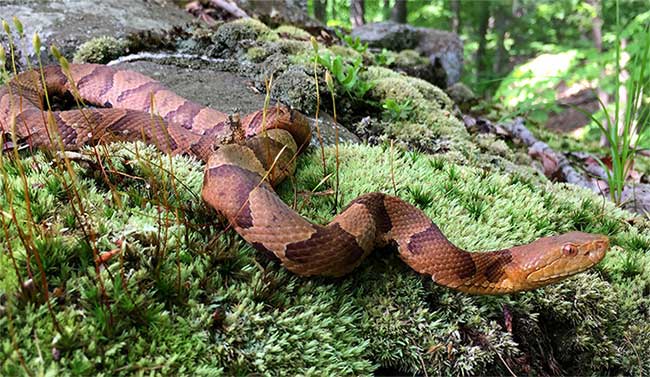Ghost snakes stop breeding after prolonged drought
Meager rainfall reduces food resources, making Connecticut female cobras harder to conceive and give birth to.
A research team at the University of Illinois tracked the number of spawns of ghost snakes living on the edge of the forest near Meriden, Connecticut, Connecticut, during a five-year drought. "Before this study, we knew very little about the direct impact of drought on snake reproduction , " said Mark A. Davis, a conservation biologist in Illinois' Natural History Survey. university, share.

The female cobra in Connecticut's forest.(Photo: Chuck Smith).
Ghost cobra must fatten his body to prepare for reproduction. In the first year Davis and his colleagues conducted the survey, the emergence of large cicada colonies provided abundant food for ghost tigers. In the summer, 20 female snakes laid a total of 148 young.
In 2012, the second year in the survey, the drought started and lasted for 5 years. Because haunted cobra hibernates and gets pregnant at the same location each year, tracking the population's success rate is relatively easy. Observations by the team showed that reduced rainfall led to fewer pregnant snakes.
Ghost snakes mainly eat tadpoles, salamanders, reptiles and other small amphibians depending on the water environment. When drought persists, their food sources become scarce. During the early drought years, some snakes continued to breed and lay 6 normal sized snakes each litter. However, the later, the lower the number of female snakes giving birth.
Survey results published on October 24 in Scientific Reports show that ghost snakes have long-lasting vitality but are still affected by climate change. Given the more frequent long-term droughts, declining fertility rates can contribute to shrinking populations.
- Snake cobra fish pants together with ghost cobra
- Rescuing a cobra who got blinded by a worm
- Human anti-drought weapons are here
- Unbelievable effects from drought
- Severe drought in China
- The strange 'fish rain' surprised the people
- Drought, forest fires turn Amazon into a source of carbon emissions
- Miraculous ability of sea snakes
- Water generator from ... air
- It's so hot that animals are 'crazy' in India
- The whole town of ghosts emerged in America
- Find out why the Mayan civilization collapsed
- Flaming red snake Vietnam makes people play hard to hunt
- Severe drought, the US carries 30 million salmon to the sea
 Animal 'suffering' after hibernation
Animal 'suffering' after hibernation Why do goats climb well?
Why do goats climb well? Scientists were surprised to see chimpanzees eating turtles
Scientists were surprised to see chimpanzees eating turtles Giant catfish died deadly due to drought in Thailand
Giant catfish died deadly due to drought in Thailand